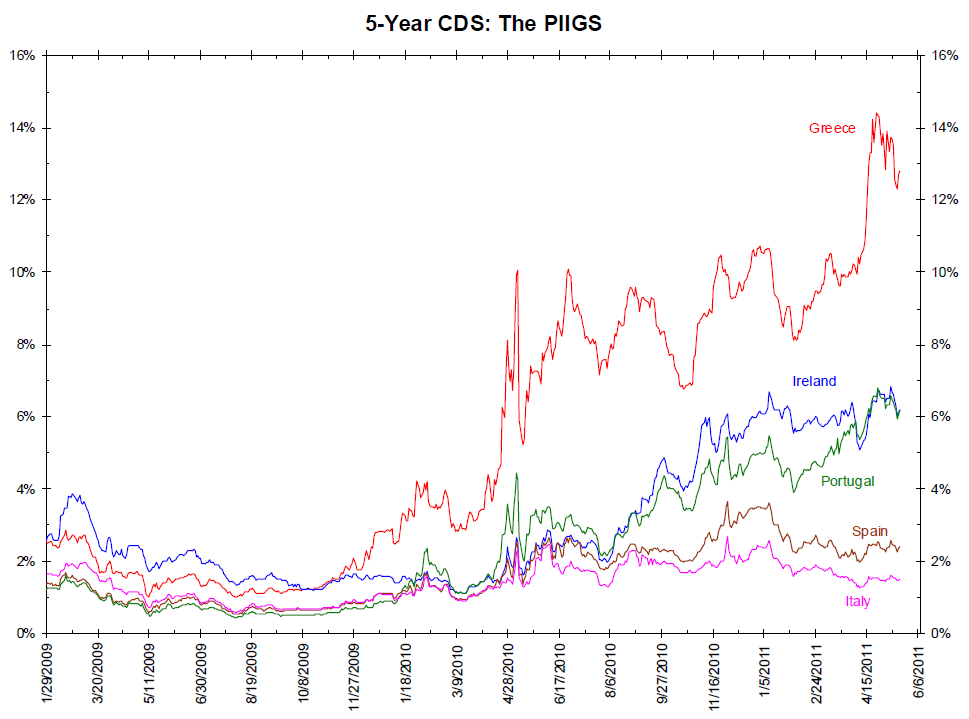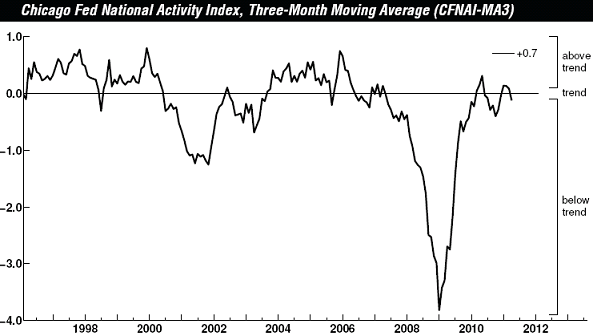By: Tony_Caldaro
Another choppy week that ends in the red for the third time this month. Economic reports were definitely on the negative side outnumbering positives by 9:2. On the positive side the weekly Jobless claims improved and the Monetary base rose. On the negative: the NY/Philly FED both declined, along with Housing starts, Building permits, Industrial production, Capacity utilization, Existing homes sales, the WLEI and Leading indicators. The NAHB index was flat.
Markets, worldwide, held up fairly well. The SPX/DOW lost 0.5%, and the NDX/NAZ was -1.1%. Asian markets were off 0.4%, as were the Commodity equity group. Europe dropped 0.9%, but the DJ World lost 0.5%. Bonds gained 0.2%, Gold added 1.1%, Crude was +0.1%, and the USD lost 0.2%. Next week offers the second estimate to Q1 GDP, Durable goods orders and Personal income/spending.
LONG TERM: bull market
While recent market activity leaves a lot to be desired. Long term prospects for the stock market continue to look bright. Our bull market count, from the SPX 667 Mar09 low, remains intact. We continue to anticipate a five Primary wave bull market, and two of these Primary waves have already completed. Primary wave I in Apr10 at SPX 1220 and Primary wave II in July10 at SPX 1011. Primary wave III began at that low. The first Primary wave divided into five Major waves: Major 1 in Jun09 at SPX 956, Major 2 in July09 at SPX 869, Major 3 in Jan 10 at SPX 1150, Major 4 in Feb10 at SPX 1045 and Major 5 in Apr10 at SPX 1220.
Primary wave III should also be dividing into five Major waves. Thus far, Major 1 in Feb11 at SPX 1344 and Major 2 in Mar11 at SPX 1249. Major wave 3 should be underway now. We do, however, offer an alternate count which suggests Major wave 2 is still unfolding. This count is posted on the DOW daily chart.
MEDIUM TERM: uptrend high SPX 1371
The current uptrend from the Mar11 low at SPX 1249 has been a bit choppy of late. The two significant rallies, thus far, were from SPX 1249-1339, a drop to 1295, then another rally to 1371. Since the uptrend high was hit on the first trading day in May the market has done nothing but work its way lower in a series of zigzags. The low thus far, SPX 1319, was hit on tuesday. We can count this uptrend with three possible counts. The next couple of weeks should determine the most probable outcome.
The first count is posted on the SPX hourly/daily charts. This suggests an ongoing Major wave 3 uptrend that has subdivided into, first Intermediate waves i and ii then Minor waves 1 and 2. Minor wave 3 should be underway now. Should the recent SPX 1319 hold and the market rallies to new highs this is the correct count.
The second count is posted on the DOW hourly/daily charts. This suggests the entire uptrend is an Intermediate B wave rally of Major wave 2. The decline into Mar 11 at SPX 1249 was Intermediate wave A, the rally to SPX 1371 this month was Intermediate wave B, and Intermediate wave C is currently underway. The final outcome would suggest a correction back down to around SPX 1249. Since most of the foreign indices we track are in confirmed downtrends this count is gaining in probability.

The third count we modified this weekend. This suggests the entire uptrend from SPX 1249 to 1371 was Intermediate wave i of Major wave 3, and Intermediate wave ii is currently underway. While the wave structure, at first look, appears to be three waves. We can count five waves using OEW techniques. This wave count also seems to align with some of the foreign markets we track. The final outcome under this count would suggest a correction back to around SPX 1295. Overall the weekly MACD suggests the market is in some sort of correction mode.
SHORT TERM
Support remains at the OEW 1313 and 1303 pivots, with resistance at the 1363 and 1372 pivots. The uptrend high is SPX 1371. Short term momentum has been heading lower since it nearly hit extremely overbought on thursday. The market action for the past three weeks has been quite choppy. Most of the commodities are in downtrends, the Euro is downtrending, and 9 of the 15 world indices we track are in downtrends. This is not what one would expect during an EW third of a third. It is more in line with correction activity.

In the first week of May last year, commodities dropped hard and the SPX experienced the “flash crash”. This sent the SPX into a three month, 17% correction. The first week in May this year, commodities dropped hard but the SPX has only drifted down for a 3.8% loss thus far. The wave activity, however, does again look correctional. Last year at this time the FED was completing its QE 1.0 program. This year it is completing its QE 2.0 program. The uncertainty of what lies ahead has definitely impacted the market as, just like last year, the economy is weakening again.
The short term parameters are quite clear. Last week the SPX entered the OEW 1313 range, (1319), and then rallied. The week before it entered the OEW 1363 pivot range, (1359) and then declined. A breakout above or breakdown below these pivots should determine the outcome of the current trend. Best to your trading!
FOREIGN MARKETS
Asian markets were mostly lower on the week for a net loss of 0.4%. Four of the five we track are in confirmed downtrends.
European markets were mostly lower as well for a net loss of 0.9%. Two of the five we track are in downtrends.
The Commodity equity group were also mostly lower for a net loss of 0.4%. All three of the indices we track are in downtrends.
The weakening uptrend DJ World index lost 0.5% on the week.
COMMODITIES
Bonds are uptrending and gained 0.2% on the week. 10YR rates have declined to 3.15% and the 1YR is bouncing along the bottom at 0.18%.
Crude is downtrending but gained 0.1% on the week. Crude appears to be bouncing off the recent $95 low.
Gold is still uptrending, +1.1% on the week, but needs to continue its recent rally to maintain the uptrend. Silver and Platinum are in downtrends.
The USD is close to confirming an uptrend, but lost 0.2% last week. The EUR (+0.3%) is already downtrending. The uptrending JPY lost 1.1% on the week.
See the original article >>
























